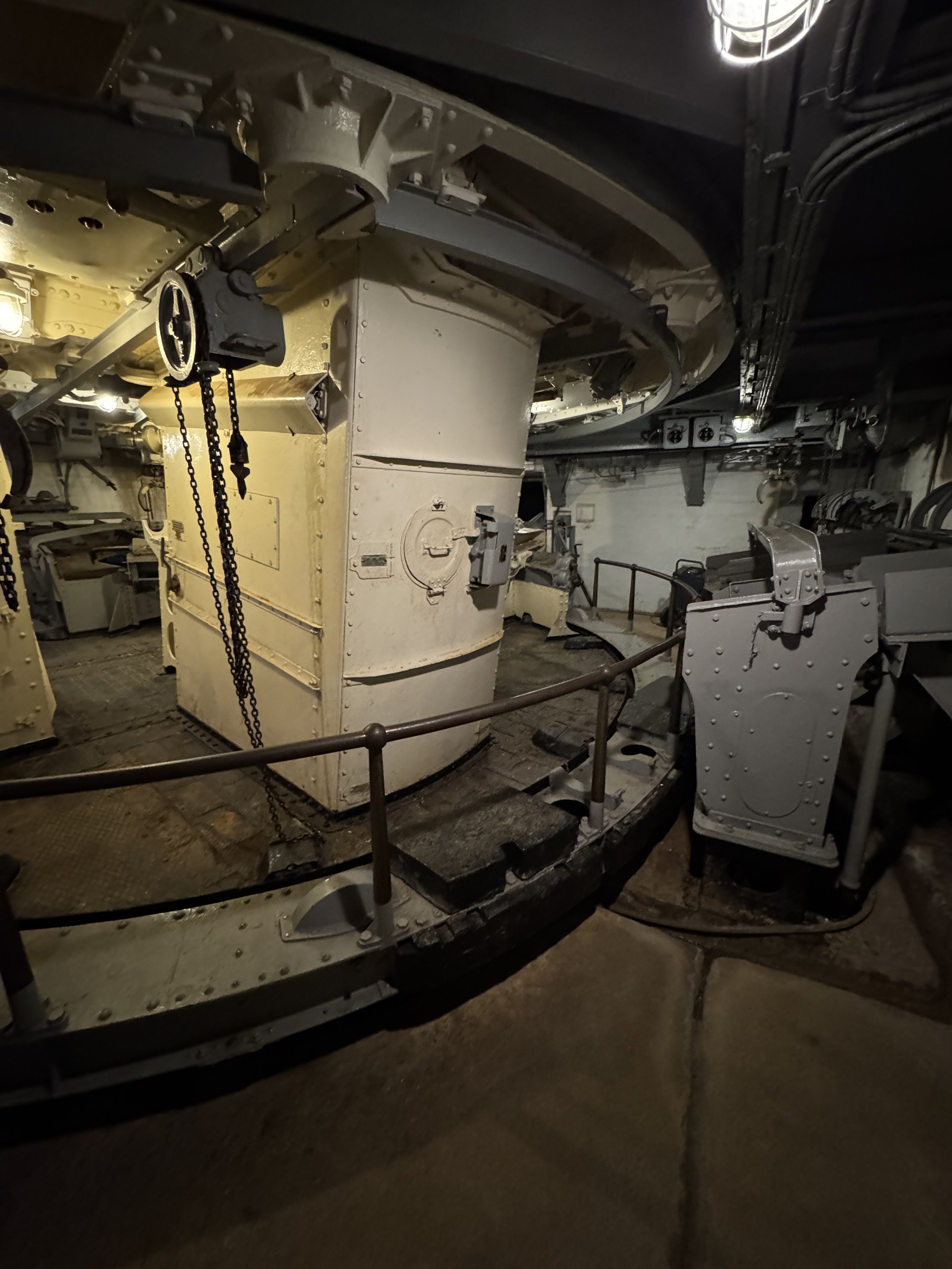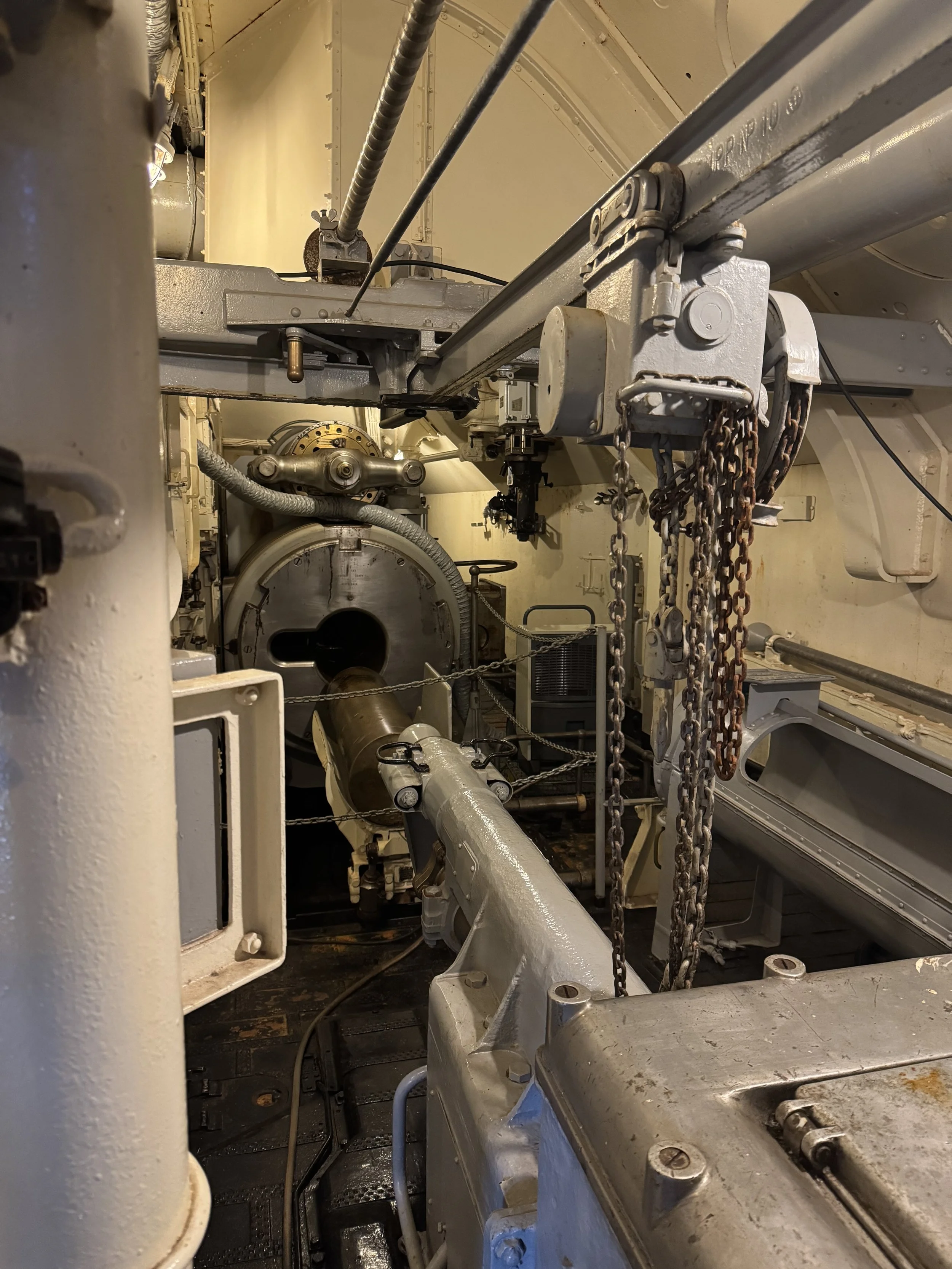Exploring Austrått Fort
A small piece of Norway’s WWII history here in our small town
Scattered throughout our small town in Norway are remnants of the past. There’s a castle from the middle ages, a historical fishing harbor, a burial mound from the Iron Age, and numerous bunkers, shelters, and lookout spots from World War II (WWII). We’ve done some self-guided tours and hikes to these various locations over the time we’ve lived here, but a couple of weeks ago we took a guided tour of Austrått fort, a five-story cannon tower utilized during WWII.
It was an interesting and at times eerie experience touring the fort. Built into the side of a stone mountain, Austrått fort was strategically placed at the entrance to Trondheimsfjord. Protruding from the top of the mountain is a three-cannon gun that was originally on board the Gneisenau battleship but was moved to the fort’s location in 1942 after the ship was damaged during a bombing raid. The gun can be seen from far and wide in our area. It’s quite impressive and is the only triple cannon gun of its kind to remain in the world today. The entire hill surrounding the massive cannon has multiple bunkers and outlook points built into it.
The fort was built under direction of German forces during their occupation of Norway which lasted from April 1940, until May 1945. The actual labor was completed by mostly Yugoslavian prisoners of war with the first test fire being done in September of 1943. Many of the prisoners died during the construction process.
As mentioned before, the fort contains five stories with the main purpose of filling the gun with ammunition. There were rooms for storing ammunition, security check points, powering the gun, and loading the gun. However, it did also have to house and feed up to 200 soldiers. There were living quarters, showers, toilets, a kitchen, and dining room, but the fort was never fully complete. There were tunnels blasted for further construction of a medical area that was never finished.
When visiting the fort, guided tours are only available mid-May until mid-August, but the grounds are open to visitors year round. There is also a war museum you can view on longer tours. We chose the shorter, one-hour tour option since we were visiting with a two-year-old.
After WWII, the fort was taken over by Norwegian forces. It was run as a defense facility until 1968. The fort was abandoned in the 1970s but was eventually restored in the 1990s. This is what has allowed it to be re-opened today as a war memorial and museum.
It can be a chilling experience to visit the fort and surrounding area with the memories of the German occupation during WWII in plain sight, but it’s important to not forget the past, no matter how grim it may be. We learn from past experiences and move forward, hopefully to a better future.
The area surrounding Austrått fort is a beautiful landscape. You can hike a flat forest trail or climb the hill to the top of the mountain for amazing views of the fjord and farmlands. We’ve done the hike in each season now, and I can tell you that the views never disappoint. There are trails leading in every direction from the top of the mountain and picnic tables at the top for a quick rest and snack. Even if you’re in the area during the off-season, Austrått fort is worth a visit.























